Shoe Screening Equipment to be Trialed at Narita Airport
- 12 Mar 2021
In line with its commitment and pledge to become the world's top airports in terms of security and safety, Narita Airport has been introducing advanced security equipment and expanding its security screening checkpoints to ensure its efficiency and rigorousness.
The Ministry of Land, Infrastructure, Transport and Tourism has been introducing stronger security measures since September 2019 in the form of X-ray screening of shoes in various styles such as safety shoes, thick-soled shoes, boots and ankle-covering shoes. Now, as part of such efforts, "shoe screening equipment" will be installed and tried out to see if they can automatically detect prohibited items without having passengers take their shoes off.
This is expected not only to improve security screening, but also to contribute to a reduced workload on security personnel, improvement for their working environment, reduce personal contact and enhance passenger convenience. The results of this trial will be utilized in our drive to offer a safer, more reliable and more comfortable airport.
Narita Airport will also continue with its preparations to provide security screening incorporating counterinfection measures in readiness for the coming recovery in travel demand.
Screening improvements to date
In April 2020, Narita Airport doubled the area of its international departure screening checkpoints in Terminals 1 and 2, and with the comprehensive introduction of the latest security screening lanes and cutting-edge screening equipment, safety and comfort will be improved, while also introducing Smart Security - a new concept of security screening that ensures efficiency and comfort led by Airports Council International (ACI) - to boost processing capacity by 50%.
- In addition to screening lanes that automatically return trays and divert baggage for further inspection, X-ray scanning equipment with advanced explosives detection functionality and body scanners have been introduced for all international flight terminals and domestic flight screening lane for Terminal 3. Some Xray equipment is equipped with AI technology for automatic threat detection.
- Passenger Reconciliation System (PRS) has been installed at entrances of security checkpoints in order to automatically authorize access to the checkpoints by checking the validity of boarding passes held by passengers upon their entry. This reduces contact between passengers and security personnel.
- Social distancing markers have been placed around the checkpoints, and security personnel are strongly advised to wear face masks, face guards and rubber gloves. Plastic shields have been placed on baggage re-inspection tables, and trays are coated with an antiviral agent. In March this year, a device that disinfects trays with UV light, will be introduced on a trial basis
- CATEGORY
- COUNTRY / AREA
- Japan









